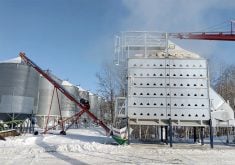If you ride bikes or run sleds, you already know that the sound of a two-stroke, triple cylinder is like a banshee wailing across the lake or down the highway.
But that’s not why AchatesPower went with the two-by-three formula. They did it because physics dictates that the number of cylinders makes a big difference in the performance and efficiency of an opposed-piston, two-stroke engine, and many other engines as well.
AP determined that three-cylinders is the best design in terms of gas-exchange, when compared to a two-cylinder or four-cylinder design. The gas exchange duration in a two-stroke engine is 120 degrees crank angle. In a three-cylinder design, the scavenging events are aligned to have minimal interference with each other.
Read Also

Phosphate prices to remain high
Phosphate prices are expected to remain elevated, according to Mosaic’s president.
The three-cylinder OP two-stroke configuration has slightly overlapping gas-exchange events, resulting in a phenomenon known as cross charging.
In a two-cylinder configuration, gas-exchange events are too far separated. In a turbo charged application, this separation causes the turbo to lose energy over the cycle, which has a negative effect on efficiency, especially at lower loads and low engine speeds. This loss of turbocharger energy has to be compensated by a crank-driven supercharger, which causes a reduction in brake thermal efficiency.
Conversely, in a four-cylinder configuration, the gas-exchange events overlap too much. This causes cross charging to occur at a point in time when hot exhaust gases are leaving the cylinder. The interruption of exhaust gas flow causes an increase in residual gas content and a lower scavenging efficiency which leads to a reduction in power.















